Light, vibrations, temperature and humidity are just some of the elements detrimental to the properties of wine that must be monitored in an ad hoc cellar.
All the characteristics of a perfect cellar
The wine conservation requires a well-designed cellar, capable of guaranteeing ideal environmental conditions to keep its properties intact over time.
From constant temperature to controlled humidity, every detail counts.
Wine Bottles – Photo Pexels
The ventilation it avoids the formation of mold and bad odors, while the absence of light preserves the aromas.
A good one thermal insulation e acoustic they are essential for protecting the wine from temperature changes and noise, minimizing vibrations that could damage it.
The use of modern technologies, such as smart sensors, and innovative architectural studies, such as curved walls, offer cutting-edge solutions.
Creating a perfect cellar is not just a matter of design, but an art that combines science and passion to ensure the best tasting experience.
Ideal temperature for storing wine in the cellar
The temperature it is one of the most important factors for storing wine correctly. To ensure that the wine maintains all its organoleptic characteristics, it is essential to maintain a stable temperature between 10°C e 15°C.
Temperatures that are too high accelerate the aging process, while values that are too low can cause the formation of crystals or alter the taste.
Digital thermometer with hygrometer – Photo TermoPro
Temperature fluctuations are equally harmful, causing the liquid to expand and contract, putting you at risk the integrity of the cap and promoting oxidation.
For this reason, it is advisable to use thermal control systemssuch as specific air conditioners for cellars or cold rooms, capable of maintaining a constant temperature.
Finally, it is important to place thermometers in strategic points of the cellar to monitor any changes and intervene promptly.
Maintain the right temperature helps preserve wine in ideal conditions, prolonging its life and ensuring optimal tasting. To monitor the temperature of the cellar it is possible to do it with a simple digital thermometer equipped with a hygrometer.
Optimal level of humidity in the cellar
Like the temperature, also thehumidity is an essential factor in wine conservationsince it directly affects the condition of the corks and, consequently, the quality of the wine.
The ideal humidity level in a cellar is between 60% e l’80%. An environment that is too dry could causedrying of the capallowing air to enter the bottle and oxidize the wine. On the contrary, excessive humidity can encourage the formation of mold and deteriorate the labels.
To maintain constant humiditywe recommend using a humidifier or dehumidifier as needed, and regularly monitoring the level with a hygrometer.
Even i cellar materialssuch as natural stone or wood walls, can help regulate humidity naturally.
Ensuring the right level of humidity helps to preserve the characteristics of the wine, guaranteeing its long and correct conservation.
Ventilation for the prevention of mold and bad odors
Next step that is, one correct ventilationis another key element for maintaining a healthy and stable environment inside the cellar, avoiding the formation of mold and the accumulation of odors that could compromise the wine.
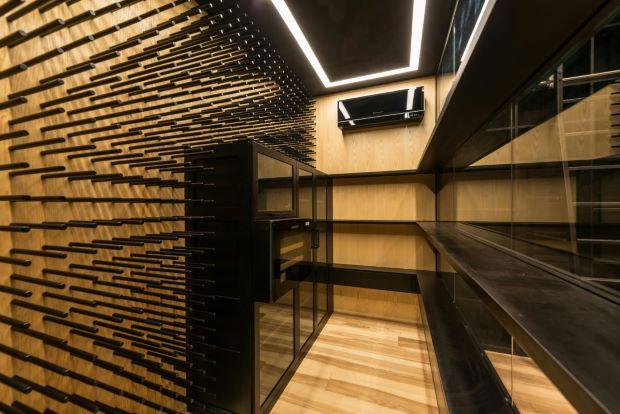 A modern cellar equipped with an air conditioning system – Photo Pexels
A modern cellar equipped with an air conditioning system – Photo Pexels
Stagnant air can in fact create excessive humidity, favoring the development of fungi, which not only damage the bottles and labels, but can also alter the cork, causingoxidation of wine.
The ideal is to guarantee constant air exchange through special devices air vents o mechanical ventilation systems.
It is important to avoid strong drafts, as they could negatively affect the temperature and humidity.
A well-designed ventilation system keeps the air fresh, eliminating any unpleasant odors and preventing the growth of mold.
And monitoring regular and adequate ventilation control help maintain the ideal environment for storing wine, thus preserving its aroma and flavor over time.
Light and conservation of wine in the cellar
Strange to say but the luce it is one of the main enemies of wine, as it can cause a chemical reaction that alters its taste, color and aroma.
The phenomenon known as “taste of light” occurs when wine is exposed to UV rays, which penetrate the bottle and degrade the aromatic compounds. White and sparkling wines, in particular, are more sensitive to light than red wines.
 The light in the cellar must not be too intense – Photo Pexels
The light in the cellar must not be too intense – Photo Pexels
For this reason, it is essential to keep the cellar in a dark environment or with a very soft and controlled light. The use of LED bulbs, which do not emit UV rays, is highly recommended.
Bottles should also be stored away from windows or sources of natural light, preferably in covered shelves.
Protecting the wine from light helps keep its properties intact organoleptic characteristicsensuring that each bottle can be enjoyed at its best, without unwanted surprises.
Creation of adequate thermal insulation for cellars
Thermal insulation it is essential to maintain a stable temperature inside the cellar, avoiding changes that could compromise the quality of the wine.
Good insulation allows you to reduce theinfluenza external climatic conditions, keeping the environment cool in summer and temperate in winter.
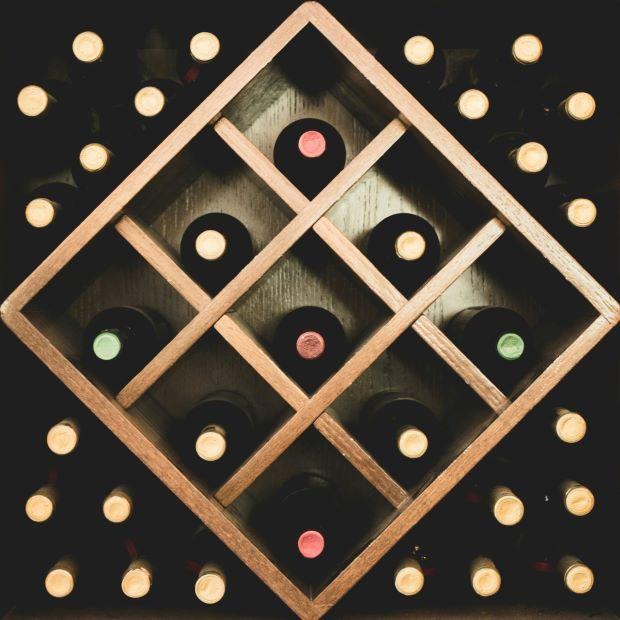 Bottles in a rack – Photo Pexels
Bottles in a rack – Photo Pexels
I more suitable materials for cellar insulation include natural stone, concrete and wood, as they have a good ability to regulate temperature.
Also the use of insulating panelssuch as expanded polystyrene or polyurethane, can help minimize heat loss. It is essential to correctly insulate walls, ceilings and floors, paying particular attention to doors, which can represent a critical point.
Investing in effective thermal insulation not only preserves the characteristics of the wine, but also allows you to save energyreducing the need for air conditioning and heating systems.
Correct positioning of wine bottles in the cellar
Il positioning of the bottles of wine is an aspect that should not be underestimated to ensure optimal conservation and prolong the life of the product.
Bottles should always be arranged horizontallyso that the cork remains moist and constantly maintains contact with the wine. This prevents the cork from drying out and letting air in, thus preventing oxidation.
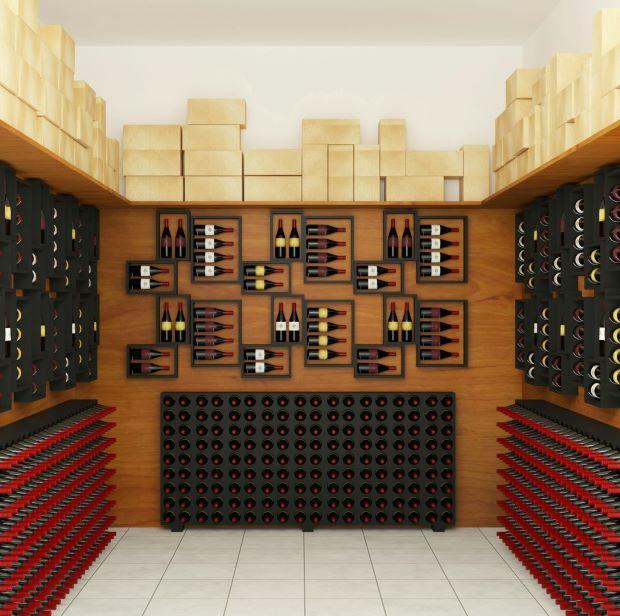 Bottles must be laid down – Photo Pexels
Bottles must be laid down – Photo Pexels
It is advisable to use sturdy shelving and easily accessible, designed to keep the bottles inclined, in order to favor a uniform distribution of the wine on the cork. Organizing bottles by type of wine (red, white, sparkling) and vintage makes tracking easier and allows you to quickly access the labels you want.
Finally, it is important to avoid move frequently bottles, as movement can disturb the natural sediments of the wine, compromising its flavour. Correct positioning ensures that the wine can mature in the best possible way, offering an optimal tasting experience.
To learn interesting notions related to the world of wine you can follow the podcast Just Wine Daydedicated to wine loverfrom beginners to experts, directed by Pasquale AlaiaAIS certified third level sommelier, Marco DeNataleAIS certified first level journalist and sommelier, and finally Alessandro De Natalejournalist and communications expert.
Modern technological solutions for wine conservation
New technologies are revolutionizing the way we store wine, ensuring optimal conditions at all times.
Among the most advanced solutions, i monitoring systems automatic temperature and humidity control allow you to maintain constant control of the environment.
Smart sensors connected to mobile devices send notifications in real time, reporting any changes to act promptly, without forgetting wine cellars very useful if you don’t want to do too heavy work.
Wine cellar – Photo Hisense
Even the air-conditioned cellars modern systems use intelligent equipment, such as specific air conditioners for wine, capable of regulating the temperature with extreme precision. Some systems also integrate automatic ventilation, to avoid air stagnation and preserve the ideal environment.
Another interesting innovation is the use of rotating and automated shelves, which allow easy access to any bottle without manual movement, reducing the risk of vibrations.
Finally, the app for personal cellar management they allow you to monitor inventory and control storage conditions remotely, offering a completely new and advanced wine management experience.
Protection of wine from noise and vibrations
In addition to temperature and humidity, the noise it is a factor that is often overlooked but which can negatively influence the quality of the wine during its storage.
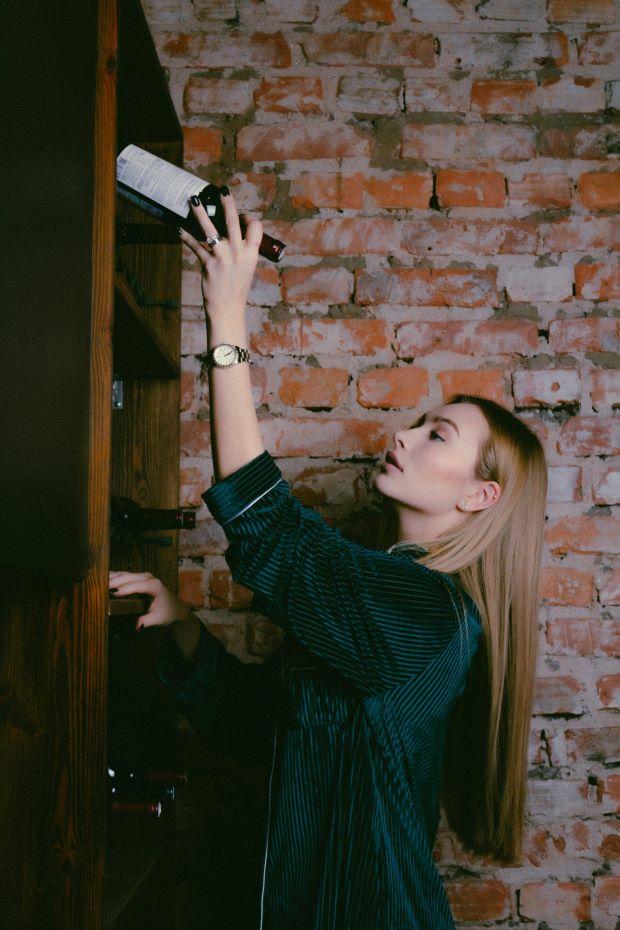 Wine must be protected from noise and vibrations – Photo Pexels
Wine must be protected from noise and vibrations – Photo Pexels
The vibrations caused by external noise, machinery or traffic can disturb the aging process of the wine, altering the formation of sediments and damaging the aromas. To avoid this problem, it is essential to equip the cellar with good acoustic insulation.
Materials like corkrock wool and sound-absorbing panels are ideal for reducing noise. Additionally, designing thick or curved walls can help dampen outside vibrations and sounds.
Acoustic insulation not only preserves the organoleptic properties of the wine, but also guarantees a quiet and stable environment, essential for an optimal maturation process.
Curved walls in the cellar: architectural innovation for wine conservation
The most recent architectural studies have highlighted i advantages of curved walls in the design of wine cellars.
Projects like that of Herzog & de Meuron for the Dominus Estate in Napa Valley they use curved natural stone walls to improve thermal insulation, maintaining a stable temperature and reducing energy consumption.
 Curved surfaces offer many advantages – Photo Pexels
Curved surfaces offer many advantages – Photo Pexels
The Polytechnic University of Milan has also conducted research on curved reinforced concrete wallswhich promote optimal natural ventilation and minimize the formation of condensation.
Finally, the design of the cantina Marqués de Riscal by Frank Gehry demonstrates how these structures can also reduce vibrations and protect wine from light, ensuring ideal conditions for prolonged, high-quality storage.
Source: www.lavorincasa.it


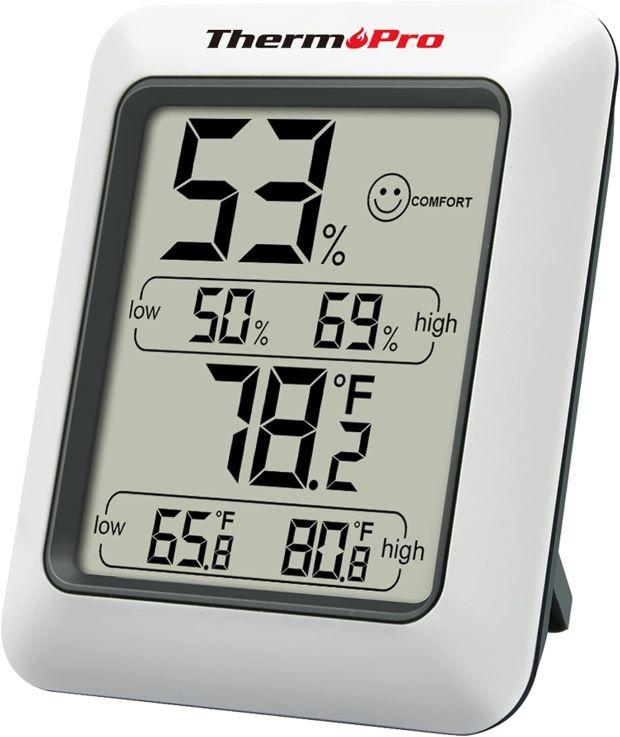 Digital thermometer with hygrometer – Photo TermoPro
Digital thermometer with hygrometer – Photo TermoPro Wine cellar – Photo Hisense
Wine cellar – Photo Hisense